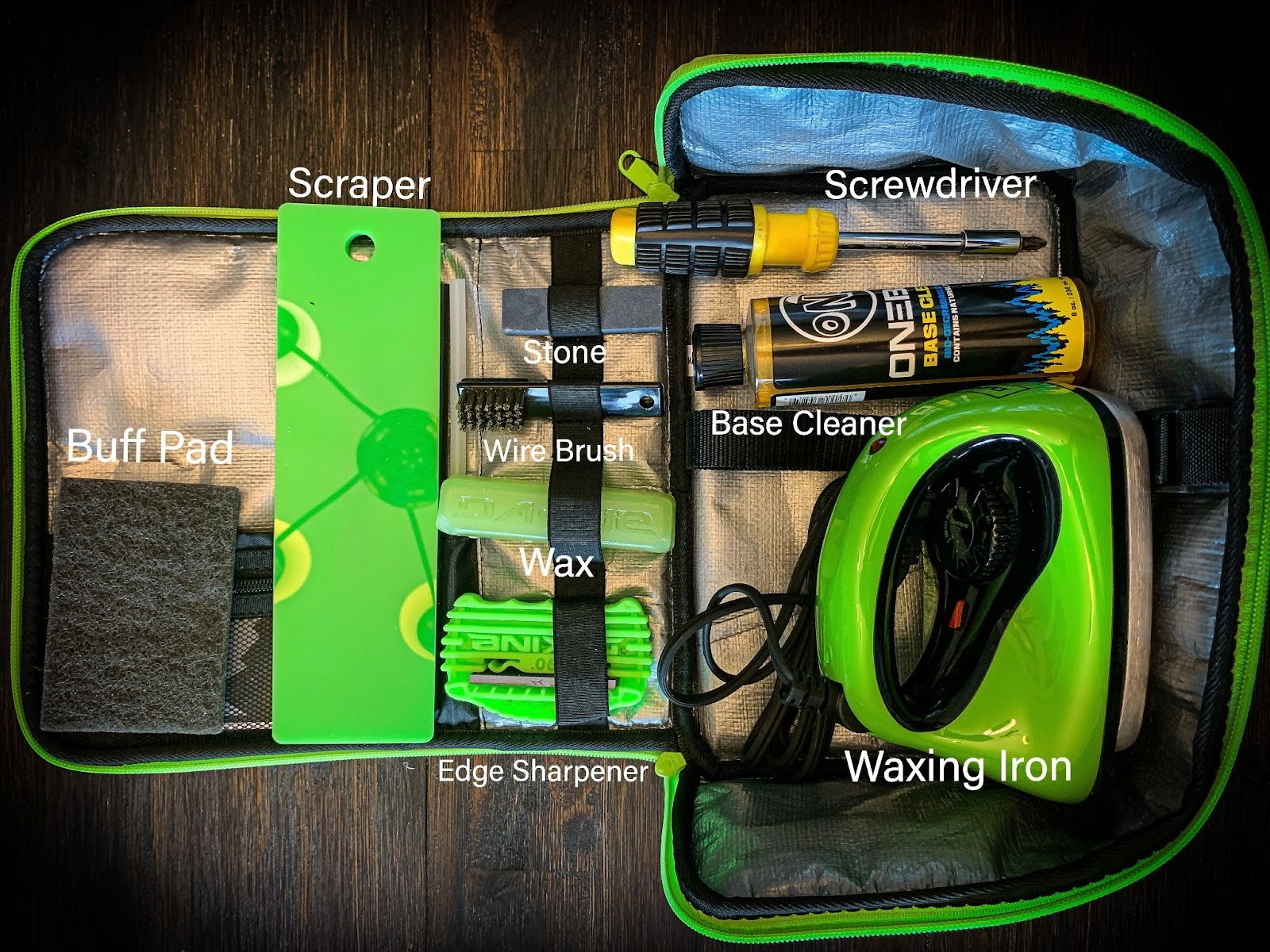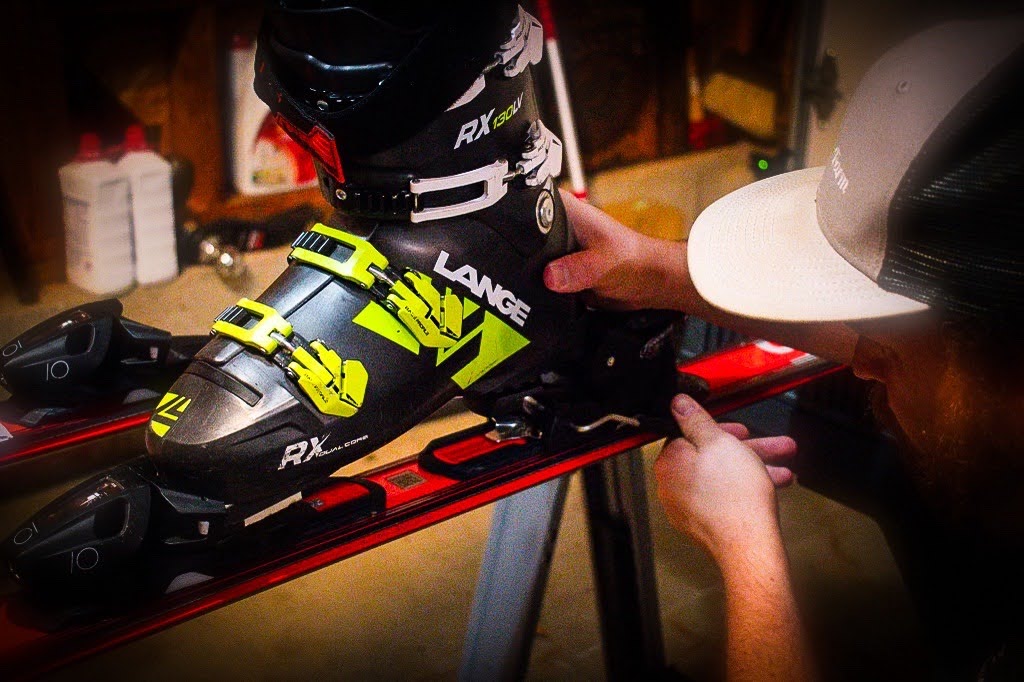Pre-Season Prep: How to Get Your Skis Ready for Winter
A s summer in the mountains winds down, it’s time to start thinking about the upcoming winter season. Preparing your skis isn’t just about getting them to look sharp on the slopes—proper maintenance ensures they perform at their best, keep you safe, and extend their lifespan.
Whether you're cruising through fresh powder, carving down groomers, or tackling icy steeps, taking the time for pre-season maintenance is essential. Follow this simple guide to get your skis ready to hit the slopes this winter!
Why is Ski Prep Important?
Prepping your skis before the season starts is crucial for both performance and safety. When your skis are properly maintained, you’ll enjoy smoother turns, better control, and faster speeds. On the flip side, neglecting your gear—think dull edges, dried-out bases, or loose bindings—can lead to poor performance, and safety risks.
Regular maintenance helps you avoid long-term damage, meaning you’ll spend less time and money on repairs and more time enjoying the slopes.

Ski Tuning Tools and Materials
Before diving into the tuning process, gather the necessary tools. Having the right equipment not only makes the process easier but also ensures that your skis are properly maintained. Here’s a rundown of the tools you’ll need to get the job done:
- Edge sharpener - Keeps your ski edges sharp for better grip on hard snow and icy conditions.
- Waxing iron - Helps evenly melt and apply wax to the ski base.
- Wax brushes/Buff pad - Buff the wax for a smooth finish, improving glide.
- Screwdrivers - For adjusting your bindings.
- Ski wax - Protects your ski base and enhances your speed on the snow.
- Plastic scraper - To remove excess wax from your skis, ensuring a smooth and even surface.
- Zip ties - Use zip ties to keep the ski brakes lifted and out of the way while waxing.
- P-Tex - Fills in gouges or scratches on the ski base.
- Clean cloths or paper towels - To wipe down your skis and apply cleaners.
- Base cleaner - Removes dirt, old wax, and grime to prepare the base for fresh wax.
Having these tools ready ensures a smoother tuning experience and saves you time on ski prep, allowing for more time on the slopes.
Steps for Tuning Your Skis
Tuning your skis properly is essential to ensure smooth and efficient skiing throughout the season. From cleaning the base to waxing and sharpening the edges, following a systematic process will keep your skis in peak condition. Here’s how you can easily tune your skis at home:
Pre-Scrape/Brush Your Ski Base
Before using a base cleaner, it's important to pre-scrape or brush the base of your skis to remove any old wax. Using a plastic scraper, gently scrape the surface of the ski to lift off as much old wax build-up as possible. A horsehair brush can also be used to clean out any old wax. This step helps ensure the cleaning process is more effective. Pre-scraping also reduces the amount of base cleaner you need to use, making it a more efficient process.
Clean Your Skis
After pre-scraping your skis, use a base cleaner and a clean cloth or paper towels to remove any dirt, old wax, or grime from the base and edges. This step is critical because a clean base allows wax to adhere properly and prepares your skis for repairs and sharpening. It also ensures the longevity of your equipment and better performance on the snow.
Repair Any Damage
Next, inspect your skis for any visible damage, particularly on the base. Scratches and gouges are common after a long season of riding over rocks or ice, but they can be easily repaired. For minor damages, use a P-Tex stick to fill in any scratches or gouges. Light the P-Tex stick, drip the melted material into the damaged area, and once it has cooled, scrape off the excess to restore a smooth surface. This repair process keeps your base in good condition and prepares it for waxing.
Sharpen the Edges
Sharp edges are key for control and grip, especially on icy terrain. To sharpen your ski edges, use an edge sharpener and run it along the sides of the skis. For optimal sharpness, perform the "fingernail test"—gently run your nail across the edge, and if it catches, your edges are sharp enough. Keep in mind that different ski styles might require different edge bevels—racers may prefer sharper edges, while park skiers may want a more rounded edge.

Waxing Your Skis
Waxing your skis is crucial for speed, glide, and protection. Regular waxing keeps your skis moving on the snow and protects the base from drying out. There are two popular waxing methods: the drip method and the crayon method.
- Drip Method:
-
The most common waxing technique, the drip method, provides a thorough wax job.
- Heat the ski wax with a waxing iron and let the wax drip evenly across the base.
- Use the iron to spread the wax into a thin layer over the entire base.
- Let the wax cool (5 min - 1 hour, check wax instructions.), then use a plastic scraper to remove the excess.
- Finally, buff the base with a wax brush to polish and smooth the surface.
- Crayon Method:
-
A quick and easy technique for light touch-ups, the crayon method requires no iron.
- Rub the wax directly onto the ski base as if coloring it in, focusing on high-contact areas.
- If using an iron, heat the wax to help it adhere.
- Scrape off the excess and buff the base for a smooth finish.
For the best coverage, try combining both methods. Before applying the crayon method, briefly touch the wax to the iron. This helps spread the wax more evenly across the base of your skis while using less wax. This technique also makes the scraping process much easier
Pro Tip: Use zip ties to hold the ski brakes out of the way while working on the base. Simply secure the brakes in the "up" position with a zip tie. Loop the tie around the brake arms and the heel piece of the binding to keep the brakes lifted. This keeps the brakes from interfering with your waxing, base cleaning, and repairs, making the process much easier. Once you're done, be sure to remove the zip tie so your brakes function normally.

Inspecting Your Ski Bindings
Properly inspecting your ski bindings is essential for safety and performance on the slopes. Your bindings are responsible for keeping your boots securely attached to your skis while allowing for safe release during falls or high-pressure situations. Here’s how to inspect your ski bindings to ensure everything is in top working order before the season starts
- Tighten Binding Screws: Ensure all screws are tight to prevent loosening during use.
- Look for Cracks or Damage: Check for any visible cracks, wear, or other damage on the bindings.
- Test Release Function: Simulate pressure to see if the bindings release properly for safety.
- Check Your DIN Setting: Ensure the DIN settings match your weight, height, and skiing ability.
- Test Binding Flexibility: Make sure your bindings allow natural movement while holding your boots securely.
Ski Tuning Mistakes to Avoid
Even seasoned skiers can make mistakes during the tuning process, which can impact the performance of their gear. Avoid these common errors to ensure your skis are in the best shape possible:
- Skipping cleaning: Failing to clean your skis before tuning can trap dirt and grime under the wax.
- Over-sharpening edges: Sharpening too much can result in overly aggressive edges, which might not be ideal for softer snow or park skiing.
- Overheating the base: This can cause damage to the base. Keep the waxing iron moving to avoid overheating.
- Not scraping off old wax: Always remove old wax before applying a fresh coat for the best results.
- Neglecting bindings: Regularly check your bindings to avoid potential accidents on the mountain.
Regular Ski Maintenance
Pre-season prep is just the beginning! Regular maintenance throughout the ski season will keep your gear in peak condition and ready for whatever the mountain throws at you. Wax frequently, inspect your edges, and check your bindings regularly to stay ahead of wear and tear. Keeping up with your ski maintenance will enhance your performance and extend the life of your skis.
Now that your skis are tuned and ready, all that’s left is to hit the slopes! Have an awesome season, and happy skiing!
